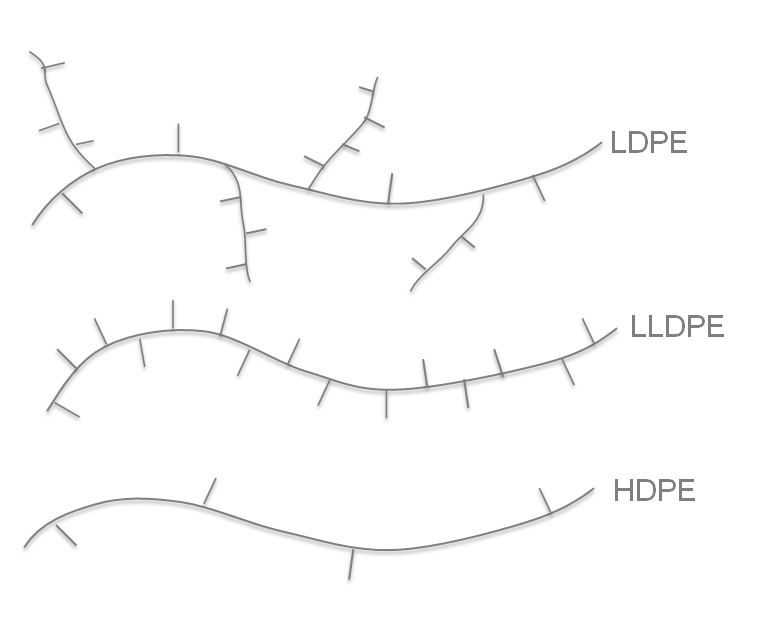Branched Polymers
The properties of polymers are strongly affected by their molecular weight and molecular weight distribution as well as by their chain architecture, particularly by the amount of branching. The effect of branching on the polymer properties depends on the number and length of the branches. Short branches interfere with the formation of crystals, that is, they reduce the amount of crystallinity whereas long branches undergo side chain crystallization because they are able to form lamellar crystals of their own. In the case of polyethylene, significant side chain crystallization can be expected around 40 carbon atoms. Long side chains also have a noticeable effect on the flow properties of the polymer, particularly when the length of the branches exceeds the average critical entanglement length. In that case, even a small amount of branching will greatly affect the processing properties.
Branching plays an important role in the performance of polyolefins. For example, linear polyethylene has a high degree of crystallinity and rather poor mechanical properties. Even a small amount of long-chain branches can significantly improve the mechanical properties and the processability of a polyolefin. This is particularly true when the polyolefin has a narrow molecular weight distribution and a high degree of crystallinity. Both the degree of branching as well as the length of the branches affects the density which can vary considerably. Typically, the higher the density of the polymer the higher the degree of crystallinity and the stiffer, harder, and stronger the polymer.

Today, many grades of polyethylene are produced with single-site metallocene catalysts. These polymers are mostly linear and have a high degree of crystallinity. However, these polymers are rather brittle. To increase the flexibility, ethlyene is typically copolymerized with low molecular weight alkenes such as propene, butene-1, hexene-1, 4-methyl-pentene-1 or octene-2 which introduce short chain branches on the mostly linear polymer chain. In general, the toughness and stress crack resistance increases with increasing chain length of the branches. Thus, copolymerization of ethylene with hexene-1 produces tougher polymers than copolymerization with propylene.
The molecular weight distribution and degree and number of chain branching also affect the melt flow properties such as shear thinning behavior and melt flow index. Because of significant differences in molecular structure between highly branched low density polyethylene (LDPE) and linear low and high density polyethylene (LLDPE, HDPE), in particular in molecular weight and chain branching, there are significant differences in the rheological behavior between these types of polyolefins. The effect of long-chain branching on the viscosity was analyzed by Bueche. He found following relationship
ηb / ηl = g3.5
where ηb is the viscosity of the branched polymer and ηl that of a chemically similar linear polymer of same molecular weight. The parameter g is the ratio of the mean square radii of the branched and linear polymer. Since g is less than unity, Bueche's relation predicts a lower viscosity for long-branched polymers.
References
- F. Bueche, Journal of Chemical Physics 40, 484 (1964)